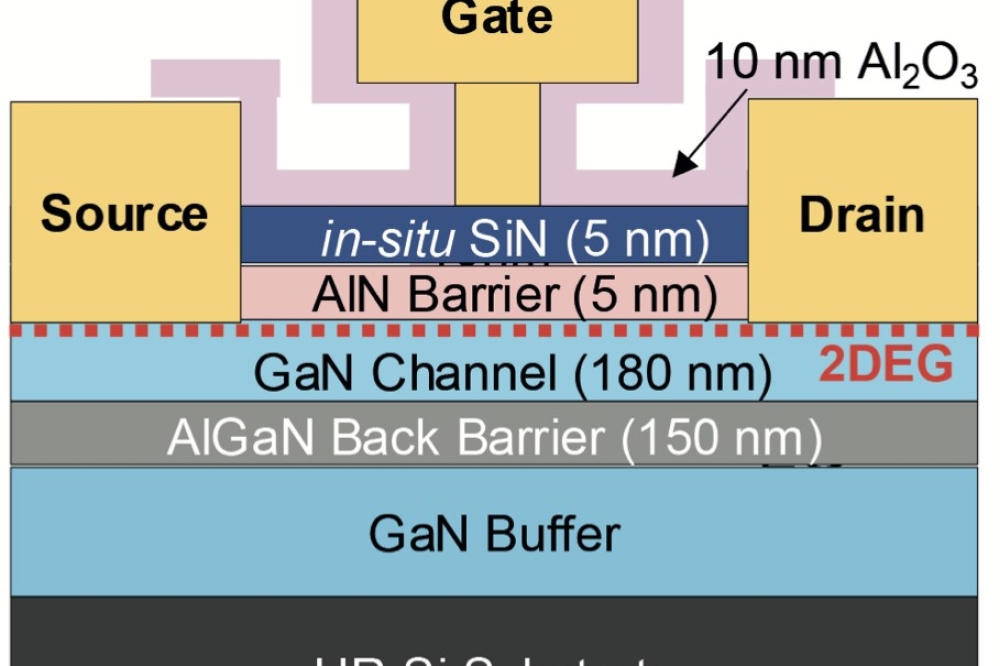Researchers shed new light on III-nitride polarity control
![]()
Above: High resolution transmission electron microscopy images reveal the atomic structure of epitaxial grown AlN and GaN on sapphire substrates
The vast majority of today's III-nitride devices are based on metal-polar heteroepitaxial layers grown on non-polar sapphire substrates. Controlling the polarity of GaN by an appropriate buffer layer was among the breakthroughs by Amano, Akasaki and Nakamura that paved the way to device grade III-nitride materials in the past.
Understanding polarity control has now gained renewed interest since the intrinsic scaling advantages of nitrogen-polar GaN heterostructures for high-frequency transistors have been discovered.
Now recent work by Stefan Mohn and Natalia Stolyarchuk at Leibniz Institute for Crystal Growth, in a joint collaboration with CNRS-CRHEA in France and North Carolina State University in the US, has unraveled the elementary mechanisms behind empirically-found recipes like nitridation of sapphire and low temperature buffers that have been used for decades in the field of III-nitride epitaxy.
The results, they say, hold the promise for improved buffers that intentionally control polarity. The latter has proved to be particularly challenging in case of N-polar layers that often suffer from mixed polarity problems.
Mohn and Stolyarchuk used advanced transmission electron microscopy (TEM) techniques for their analysis. These techniques - especially aberration corrected transmission electron microscopy - allow for true atomic resolution of the structures. N, O and Al atoms can be distinguished essentially from their intensity, if the electron transparent area has a thickness below 10nm. In this way, structure and polarity of the films can be analysed at the atomic scale to gain new insights.
The authors show that polarity of the films change from N-polar above the interface between sapphire and AlN to metal polarity through a thin AlON layer. This layer forms as a result of chemical reaction between ammonia and sapphire during the initial nitridation of the sapphire substrate.
The change in polarity is provided by the particular structure of the AlON compound, which consists of two interpenetrating N- and metal polar lattices that have a common anion sublattice.
In the past there has been a lot of speculation on the role of the low temperature buffer to control polarity. The authors have shown by dedicated experiments, that the 'metal polar' AlON is unstable under high temperature growth conditions required for III-nitrides. So the low temperature buffer protects the AlON and promotes metal polarity into the III-nitride layer grown at high temperature on top. If the layer is grown directly at high temperature on top of the AlON, the AlON layer dissolves and N-polarity establishes.
The discovered role of AlON in polarity control will allow optimizing buffer layers and prevent mixed polarity, especially in case of N-polar films. It opens new perspectives for device concepts based on polarity engineering, which realization is hampered until now by mixed polarity issues. Phase matching structures for nonlinear optical devices or realization of two dimensional electron gases at heteropolar interfaces are examples.
'Polarity Control in Group III-Nitrides beyond Pragmatism', by S. Mohn et al; Phys. Rev. Applied 5, 054004 (2016).


































